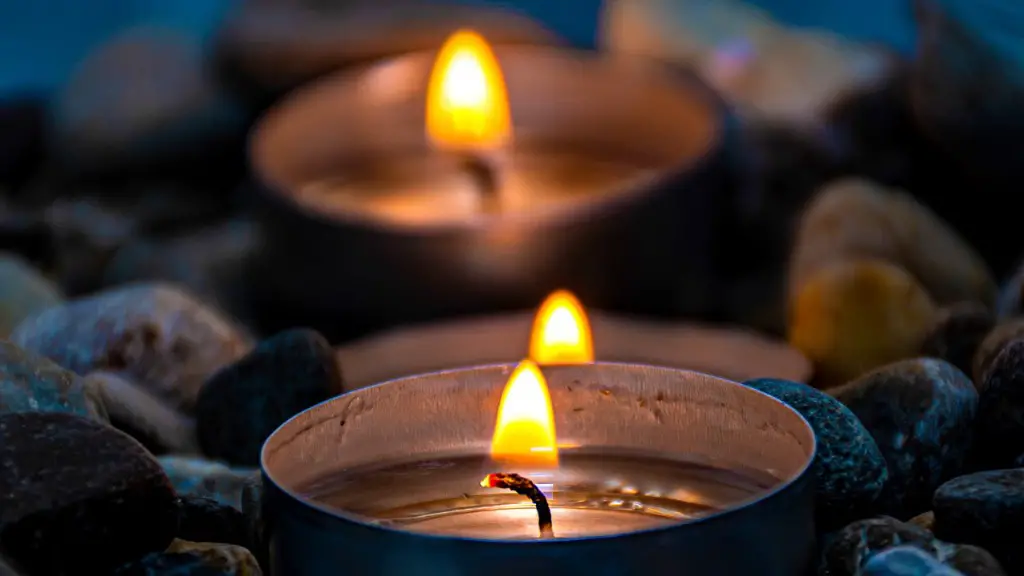The caste system has been a characteristic of Indian society for centuries, but it is a complex issue as to whether it properly belongs within Hinduism or Buddhism. There is a great deal of debate about the matter, with opinions being offered from both sides and in some cases being influenced by gender, culture and economics. Given the importance of the question, it is important to consider the evidence to understand when and under what circumstances the caste system was first introduced, and whether or not it is an intrinsic part of either faith.
One of the most widely accepted beliefs of the caste system is that it originated as an order of social organization that identified different classes of people based on their occupation. This group identification was then mirrored and solidified in the religious beliefs, such that those in the same class were seen as part of the same religious community. This, it is argued, is why the caste system appeared in both Hinduism and Buddhism.
Historians have suggested that the caste system began to emerge in India during the period of Vedic literature, from 1500-600 BCE. This observation has been made based on references to the four varnas, or ‘social ranks’, discussed in the Vedas. These four classes – Brahmin, Ksatriya, Vaeshya, and Shudra – have been associated with the four castes in the caste system. This suggests that the roots of the caste system may have first taken hold in Hinduism.
However, adherents of Buddhism have argued that the caste system arose separately, so is not part of the religion. This view is based on the fact that Buddha was heavily critical of what was then the existing system of varnas, and instead taught that people should be judged on their individual merits and moral character, not on which class they belonged to. It has been further argued that the introduction of Buddhism in India, from the 5th century BCE onwards, is what led to the end of the Vedic period, and with it the caste system.
From a philosophical point of view, there is certainly an argument to be made that the caste system does not fit well within either faith. Hinduism, for example, focuses on developing an individual’s spiritual potential rather than ascribing a particular social position, which the caste system does. Similarly, Buddhism espouses a path of liberation from all clinging, including distinction based on social class.
When it comes to the question of whether or not the caste system is part of Hinduism or Buddhism, it is clear that there is no clear-cut answer. While there is evidence to suggest it may have originated in Hinduism, there is also evidence to suggest it arose separately, and is not condoned by either faith. Ultimately, it is a complicated issue and one which requires further research in order to draw any meaningful conclusions.
Role of Hinduism in the Development of the Caste System
Whether the caste system is an intrinsic part of Hinduism or Buddhism is in many ways beside the point, as the religion definitely played a role in the development, enforcement and perpetuation of the system. This can arguably be seen in the position given to the four classes of the varnas – a breakdown which, while it was not completely enforced by law or by scripture, acted as a powerful suggestion of who was entitled to what privileges, often regardless of economic or social reality.
The hierarchical structure of the caste system meant that certain privileges and rights reached only certain groups, while others were denied. This, it has been argued, was a central part of the design of Hinduism itself – as the higher classes were perceived to have access to greater wisdom and knowledge, and so held a privileged position over those in the lower classes. Thus, for those in lower castes, the only way out of their social condition was to prove oneself worthy to the higher classes, a reality which resulted in an entrenched power imbalance between the classes.
It is also important to note that Hinduism was itself a major influence in the spread of the caste system. As the religion spread through India, its influence was seen in numerous aspects of society – from art and architecture to language, literature, music and dance. As part of that, the hierarchical structure of the caste system was adopted by many of the regional cultures, even when there was no explicit adherence to Hinduism. This is reflective of the religion’s pervasiveness in India and its attendant social implications.
Role of Buddhism in The Development of the Caste System
Having said this, it also important to note that Buddhism played an important role in the emergence of the caste system in India. Although the Buddha himself was opposed to the hierarchical social structure of the caste system, the religion was still heavily influenced by it. This is perhaps best seen in the decision to differentiate between the laity and those of the monastic order – those who chose to follow the Buddha and the teachings of Buddhism were seen as separate from those who did not, and this distinction perpetuated the hierarchical nature of the caste system.
Moreover, there have been suggestions that the religion itself was used to spread the hierarchical structure of the caste system further by providing a framework in which the lower classes could achieve a higher rank through dedication to their spiritual practices. This is seen, for example, in the existence of Caste Ascetics, or Those Beyond Caste, who are seen as having transcended the limited roles that society has assigned to them by actively working to improve their inner destinies.
Ultimately, it is clear that Buddhism, too, played an important role in the development of the caste system in India. Although it was not necessarily intrinsic to Buddhism, the religion served to legitimize and propagate the existing social divisions that were already present in Hinduism and to ensure those at the top of the power structure remained there.
Gender and the Caste System
It is also necessary to consider the role of gender in the development and enforcement of the caste system in India. While there was certainly a degree of religious oppression of certain sections of society, there was an even greater degree of gender-based oppression imposed on women. This is seen in the fact that a woman’s status was based not only on her caste, but also on her husband’s social position. This was particularly true in cases where a woman had been left widowed or when her husband was of a lower caste.
Women were also denied many of the basic rights afforded to men, such as the right to own property and access to education. This had a profound impact on the social, economic and political roles that women were able to play, and meant that inequality between the genders was deeply entrenched within the caste system. This was in spite of the fact that both Hinduism and Buddhism taught that all beings should be treated equally.
Although the caste system has since been officially abolished, the gender-based oppression that it has left behind is still very much a reality in India. Women today face a range of societal restrictions and prejudice, from gender-based violence to an unequal education system and employment opportunities. This is further compounded by the fact that some communities still adhere to the traditional social divisions of the caste system, thus ensuring that inequality remains firmly in place.
Role of Government and Social Movements in End of Caste System
The Indian government has taken a number of steps in recent years to address the legacy of the caste system and its attendant issues. Chief among these is the implementation of laws that seek to protect the rights of those in marginalized castes by prohibiting discrimination and providing various forms of assistance to these groups. These have been complemented by various social reforms and public education initiatives, aimed at raising awareness of the heritage of the caste system and promoting more equitable social norms and values.
Additionally, there has been a rise in social movements dedicated to dismantling the remnants of the caste system in modern India. These range from grassroots initiatives focused on providing access to basic rights to larger organizations that are actively engaged in combating discrimination and inequality. These movements are rooted in both Hinduism and Buddhism, and rely heavily on the moral teachings and values of both faiths to further their cause.
In conclusion, it is clear that the caste system has been a major feature of the Indian social landscape for centuries, and its legacy still impacts Indian society today. Although it is complicated to ascertain whether this system truly belongs to either Hinduism or Buddhism, both religions have certainly played an important role in its development, enforcement and perpetuation. However, it is also clear that a great deal of progress has been made in recent years to end the caste system and its oppressive consequences, and that both the government and various social movements have been instrumental in achieving this goal.
Modern Perception of Caste System
It can be argued that the Indian caste system is no longer as rigid as it once was, due in part to the widespread efforts to end the oppressive practice which have been launched in recent years. Evidence also suggests that many Indians, particularly those in the younger generations, are slowly starting to reject the traditional hierarchy of the caste system, instead embracing a more decentralized view of society that values individual potential over social divisions.
However, it is also important to recognize that much of the oppression and discrimination that were part and parcel of the caste system remain very much in existence today. Casteism continues to be an issue in areas such as access to education, employment, healthcare and housing, and many individuals still suffer due to their social position. This is why it is so important to continue to raise awareness of the problematic legacy of the caste system and to actively work towards dismantling it and its consequences.
Alternatives to the Caste System
It is also necessary to consider what alternatives exist to the Indian caste system. This is a complex problem as it requires taking into consideration both the need to respect the cultures, traditions and customs of India, while also seeking to eliminate the inequalities and inequalities of opportunity that exist within Indian society. One solution that has been proposed is the implementation of a merit-based system that would see individuals being judged on their individual merits, such as education and work experience, rather than on the basis of their social position.
Another solution would be the adoption of a quota system, whereby those in lower castes or other marginalized groups are given preferential access to certain opportunities or resources. This could be accomplished by creating affirmative action policies that seek to provide equal opportunities to those in lower castes or other disadvantaged sections of society, while also taking into consideration their unique needs and challenges.
It is clear that eliminating the oppressive legacy of the caste system is no easy task. Nevertheless, with ongoing efforts from the government, social movements and individuals, India can make significant progress in eliminating caste discrimination, creating greater social equality and providing better opportunities for all sections of society.

